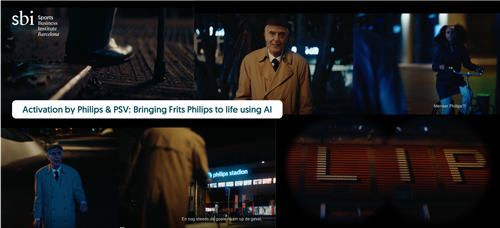In Focus / Sponsorship Activation: An Overview
Sponsorship essentially is a collaborative arrangement between a property which could be an event, or place, or person and brand where the property offers its platform and its followers for promoting the brand in exchange for financial or in-kind support. It has gone on to become one of the most important marketing tools. Sports, as a whole, has been one successful medium for brands to exercise this marketing tool, precisely why brands are investing millions in maximising the sports platform.
European Sponsorship Association, in its research ‘The 2025 ESA Sponsorship Market Overview’ with Nielsen Sports, states that the total value of Europe’s sponsorship market was €32.91bn in 2024, out of which sport sponsorship reached €23.41bn.
In European football, the commercial revenue stream, of which sponsorship constitutes a significant share, is now commanding a higher share of the total revenues and has eclipsed the broadcast income stream, once the revenue driver of the club. According to the UEFA European Club Licensing and Benchmarking Report, commercial revenue grossed €8.9bn across the 700+ top tier league clubs and eclipsed broadcast revenue which grossed €8.2bn.
Now, sponsorship is incomplete without the associated activation. In simple terms, sponsorship activation is the process by which the brand leverages its negotiated rights with the property to engage its audiences to pass across brand messages and communication effectively.
Without activation, sponsorship loses its desired outcome and runs the risk of resource wastage.
In this blog, we focus on activation, its importance, multiple routes and the changing nature of the medium of activation.
Importance of Activation
Brands use of sponsorship as a tool to fulfil their marketing objectives. It could range from increasing brand awareness to generating engagement with the intended audiences in order to increase its brand loyalty or to connect effectively with the audiences to pass across crucial brand messaging or even to increase sales. Global brands like Sanofi used the platform as big as the Paris Olympics 2024 with the aim of employee engagement. Whatever the objectives, it needs to be communicated to the audience. That is where activation comes in.
In activation, brands use the rights and assets that comes with the sponsorship – of course, after negotiations – in a creative manner to pass the intended message and make the audience interact with the brand effectively and ensure message is communicated and understood. Resources used for activation, be it financial or physical, are in most cases additional to the amount paid to secure sponsorship rights.
For brands sponsoring football clubs with global fan presence, activation modes employed are dependent on the geography, local brand team, language and most effective local communication platform be it digital including social media, or OOH, or any other and requires a substantially higher financial resources additional to the sponsorship value. For brands sponsoring a club with more concentrated local presence, the modes of activation are that much more concentrated.
In sports sponsorships, various modes of activation have been employed like:
– Experiential activations
– Influencer partnerships
– Product sampling
– Games and contests
– Branded wearables
– Social media campaigns
– Digital activations
– Content-driven activations
While there are multiple modes, it’s important to create a strong process while planning activation:

In a nutshell, sponsorship is incomplete without accounting for associated activation, which includes planning, executing and measuring.
Changing Nature of Activation
One key metric to measure sponsorship success is reach and engagement. Simply put, the brand message needs to maximise its reach of intended target audiences along with ensuring engagement for a better understanding. With physical activation and traditional media platforms, associated costs and logistical challenges make it prohibitive to a certain extent. With the rapid acceleration of internet connectivity and increased speed, the challenges were overcome to a large extent using digital-led activation methods, heralding a new generation which had multiple benefits:
– Faster and wider reach.
– Greater control over messaging.
– Unlimited scope of innovation.
– Clear measurement metrics.
– Data gathering capabilities.
Further, the change in media consumption patterns of audiences, and advancement of new technologies made digital activation even more adaptable and a first-choice method. The immense scope of innovation using technologies like AI, Virtual Reality, Immersive Reality or Augmented Reality makes this widely consumed and engaged by target audiences.
One notable example is when Philips celebrated setting the Guinness World Record for the longest-running sports sponsorship with PSV Eindhoven by announcing a 360-degree activation – on the field, in the factories, on TV and across social media. The highlight was bringing the founder Frits Philips to life using AI technology with the aim of symbolising shared legacy. The film, created using AI, saw him roaming around the city, proudly announcing the record, linking the past with the future.

The other underlying benefit of digital activation is capturing, understanding and analysing data on engagement, reach and conversions. Integrating this data allows for a thorough understanding of the target audience and effectiveness of the strategies employed.
SBI’s Masters in Football Business and Management programme offers in-depth discussions on sponsorship and activation with top football industry decision-makers. The course, designed to kickstart your career in the football industry, is set to begin its new session in October 2025.
Please read here for more details.
In Conclusion
Activation is an integral part of any sponsorship. An integrated approach covering as many touch-points of the target audience at a balanced cost is essential to make a sponsorship achieve its intended return-on-investment (ROI’s) and return-on-objectives (ROO’s). Today, an increasingly adopted hybrid model using physical and digital activations is being used to balance these needs with results.
Images & Graphs: SBI Barcelona






